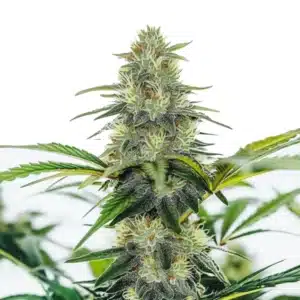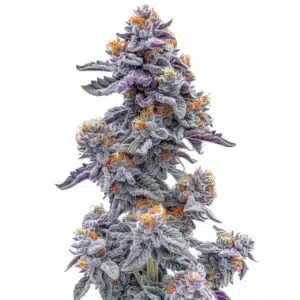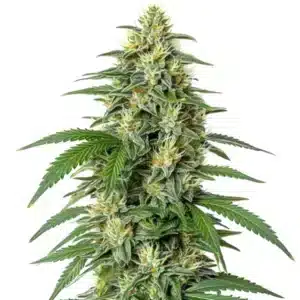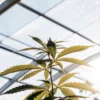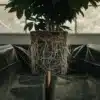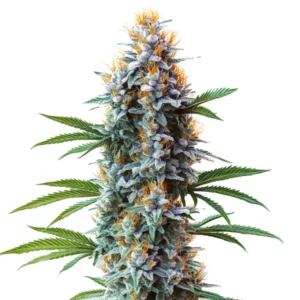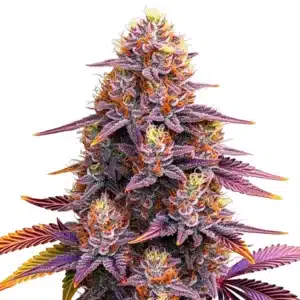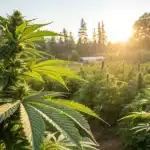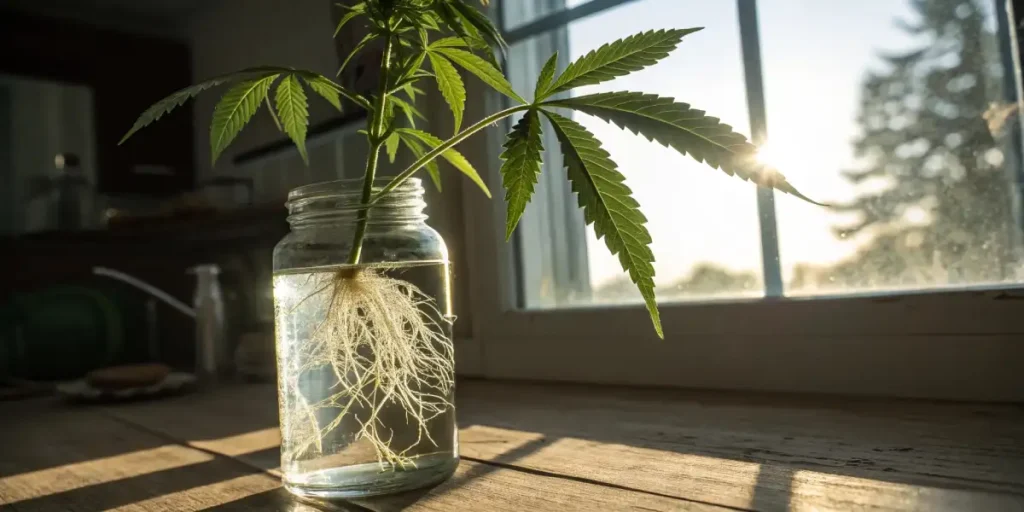
Cannabis Growing Roots from Stem
For both novice and seasoned cannabis cultivators, mastering the art of cannabis growing roots from stem can elevate your gardening game. This method not only expands your garden but also ensures that your favorite strains thrive. Imagine replicating a cherished plant without needing seeds. It’s all within reach with a few simple steps.
Sourcing quality cannabis strains is essential. Consider strains like White Widow from Blimburn Seeds, celebrated for its resilience and ease of growth from stem cuttings. By selecting robust strains, you increase your chances of success as you delve into cannabis propagation techniques.
Recommended Strains
AK x White Widow Auto
|
|
THC | 18% - 24% (Medium) |
|
|
Type | Autoflowering |
|
|
Yield | Low |
|
|
Phenotype | 60% Indica / 40% Sativa |
Ooze
|
|
THC | 19% - 23% (Medium) |
|
|
Type | Feminized |
|
|
Yield | Medium |
|
|
Phenotype | 70% Indica / 30% Sativa |
Cloning Cannabis from Stem Cuttings
Cloning cannabis is a popular technique to create an identical copy of your favorite plant. Start by selecting a healthy, disease-free mother plant.
Use a sharp, sanitized blade to take cuttings. It is best to take these cuttings from the upper branches of the plant, as they are typically the healthiest and most vigorous. Typically, selecting a branch with at least two nodes increases the likelihood of successful rooting. An angled cut exposes more surface area, aiding in root development. After you have taken your cuttings, it is a good practice to treat the open wounds on the mother plant with a plant healing agent or sealant. This helps prevent infection and potential air bubbles (embolism) in the plant’s vascular system.
Another essential tip is to ensure that the cuttings are taken from a plant that is not flowering. This is a critical rule: clones must always be taken from a mother in the vegetative growth stage. If the mother has started to flower, the clones will not root or grow properly.
After taking the cuttings, place them in a controlled environment that supports root development. A humidity dome can help maintain the moisture levels needed for the cuttings to thrive.
Promos & Deals
How to Grow Cannabis Roots from Stems
Once you have your cuttings, the next step is rooting them. First, dip the cut end of the stem into a rooting hormone to encourage faster root development.
Next, place the cutting in a medium that retains moisture well, like rock wool cubes or peat pellets. Ensure the medium is moist but not waterlogged.
Learning how to grow cannabis roots from stems also involves maintaining an optimal environment. Until the cuttings develop their own roots, they feed and absorb moisture directly through their leaves. For this reason, it is vital to maintain a high relative humidity to keep them hydrated. It typically takes 15 to 20 days for a strong root system to form, after which they begin to absorb nutrients through it. Regularly misting the cuttings can help maintain the desired humidity.
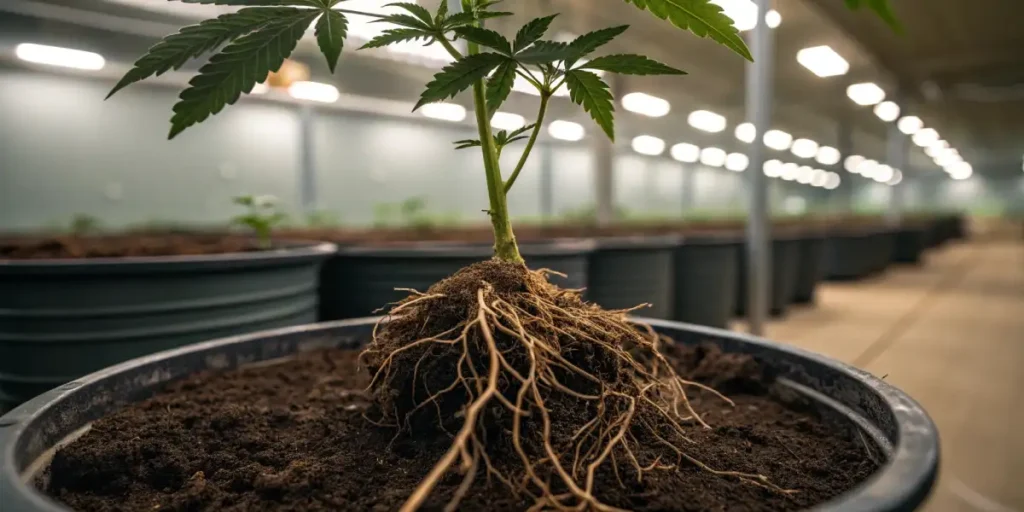
Rooting Cannabis Cuttings in Water
Rooting cannabis cuttings in water is an alternative method that is simple and requires minimal equipment. Start by placing the cuttings in a glass of water, ensuring at least one node is submerged. However, for the best results in water, you need precision, as this method is more technical than it appears. The water’s pH must be consistently maintained around 5.5, and the EC (nutrient concentration) should be kept very low, around 0.2. This requires the use of accurate meters to ensure the roots grow healthy without a substrate.
Change the water every few days. Once the roots are a few inches long, the cutting is ready to be transplanted. Transitioning from water to soil requires careful handling to avoid damaging the new roots.
Best Practices for Cannabis Stem Rooting
Successful rooting relies on following best practices. Ensure your cuttings receive ample light, but avoid direct sunlight. A grow light set to 18 hours on and 6 hours off works well. Maintain a consistent temperature (70-75°F) and humidity (around 70%). Sterile conditions help prevent disease and infection.
Final Step: Transplanting Your Clones Safely
Once your clones have a healthy root system, they are ready for transplanting. To ensure you don’t introduce pests into your main garden, a good preventative measure is to give the clones a cleaning dip before planting.
A traditional, ‘old-school’ method involves submerging the clone in a solution of water with a few tiny drops of bleach (‘lejía’), followed by a thorough rinse in clean water. However, this is a very high-risk technique that must be done with extreme caution. Bleach is extremely caustic and can easily burn or kill the delicate new roots and leaves if the concentration is even slightly too high.
For this reason, the modern and much safer best practice is to use a very dilute solution of horticultural soap or food-grade hydrogen peroxide and water. This will effectively clean off any potential unseen pests or eggs without the high risk of damaging the clone.
Cannabis Plant Propagation Techniques
Exploring various propagation techniques can broaden your skills. Air layering is another technique where roots develop on the stem while it’s still attached to the mother plant. This can be beneficial for strains that are difficult to clone. Tissue culture is a more advanced technique involving growing plant cells in a sterile lab environment.
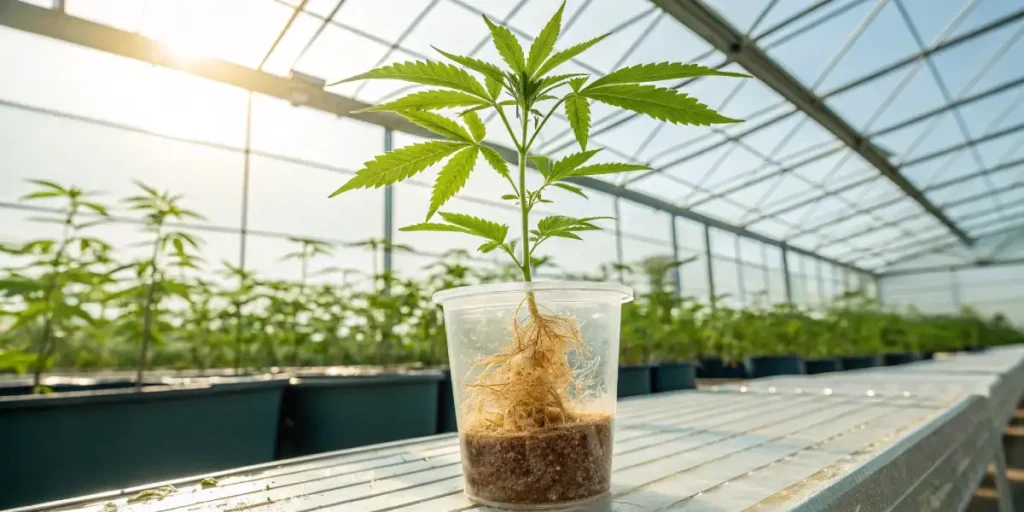
FAQs of cannabis growing roots from stem
What is the best time to take cannabis cuttings?
The best time to take cannabis cuttings is during the plant’s vegetative stage. During this phase, plants are actively growing and have the energy to support new root development. Avoid taking cuttings during the flowering stage, as the plant’s resources are focused on bud production. Taking cuttings in the morning is ideal as the plant is naturally hydrated and less stressed.
How long does it take for cannabis cuttings to root?
The time it takes for cannabis cuttings to root can vary depending on the strain and environmental conditions. On average, roots begin to form within 7 to 14 days. However, some strains might take longer, up to 21 days. Patience is key. If you don’t see roots immediately, continue to provide proper care and maintain optimal growing conditions.
Can I use tap water for rooting cannabis cuttings?
Using tap water for rooting cannabis cuttings is possible, but quality varies. If your tap water is high in chlorine or other chemicals, it might hinder root development. Letting tap water sit for 24 hours can help evaporate some of these chemicals. If you’re unsure, consider using distilled or filtered water.
Why are my cannabis cuttings not rooting?
If your cannabis cuttings aren’t rooting, several factors could be at play. Check the health of your mother plant, as unhealthy cuttings are less likely to root. Ensure you’re using a sharp, sterile blade to prevent infection. Environmental conditions are crucial. Make sure your cuttings are kept at the proper temperature and humidity levels.
Should I use a rooting hormone for cannabis cuttings?
Using a rooting hormone for cannabis cuttings is highly recommended. These hormones, available in gel or powder form, contain essential nutrients that promote root growth. They are particularly beneficial for novice growers or those working with difficult strains. Applying rooting hormone is simple: dip the cut end of your cutting into the hormone before placing it in your chosen medium.


